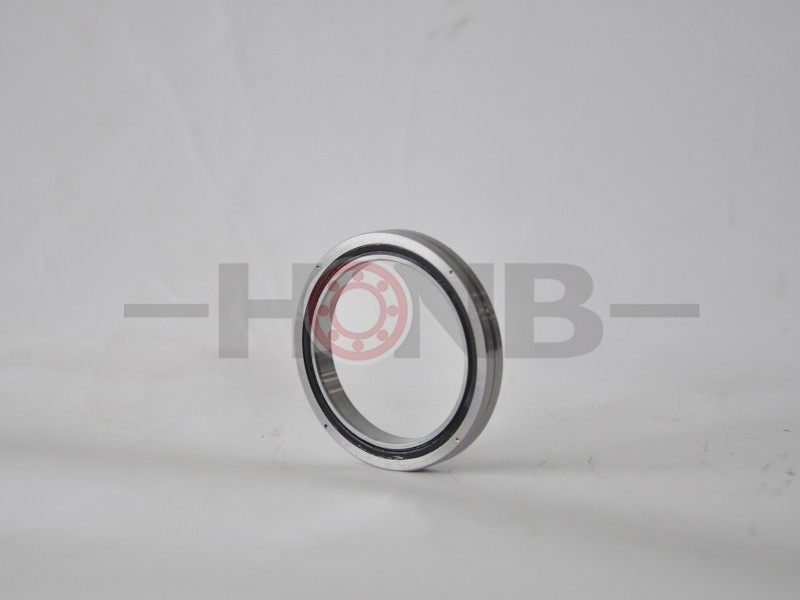Six types of damage common to thin-walled crossed roller bearings
Author: hongyuanTime:

First, the rolling elements (balls and rollers, etc.) and the inner and outer ring raceway surface wear and spalling: this will cause the radial clearance and axial clearance of the thin-walled crossed roller bearings to increase, and the thin-walled crossed roller bearings are in operation. Noise and heat are generated, and the correct working position of the mating shaft is changed, and vibration occurs. The initial stage of surface fatigue spalling is the appearance of pitting on the surface, and finally the surface layer of the sheet is peeled off. The bearing rolling elements and the inner and outer ring raceways are subjected to periodic pulsating loads, resulting in periodically varying contact stresses. When the number of stress cycles reaches a certain number, fatigue peeling occurs on the rolling element or the inner and outer ring raceway working faces. If the bearing load is too large, this fatigue will be exacerbated. In addition, the bearing is not properly installed, the shaft is bent, and the raceway is peeled off. Fatigue spalling of the bearing races reduces the accuracy of the shaft and produces vibration and noise.
Second, the inner and outer ring mating surface wear: This is because the inner and outer rings of the thin-walled cross-roller bearing are not assembled with the shaft and the housing hole, which destroys the cooperation relationship between the bearing and the housing, the bearing and the shaft, further accelerating the bearing itself and Wear of the mating surface of the shaft or housing that cooperates with it (commonly known as walking the inner ring or walking the outer ring).
Third, the isolation ring wear and loose: in the work of the isolation ring and rolling elements (balls, rollers, etc.) rub each other, if the lubrication is poor, it will accelerate wear. After the isolation ring wears, the rolling elements are loose, and when it is serious, the isolation ring will fall apart and the rolling elements will fall off.
4. Burns: If the lubrication is poor or the lubricating oil does not meet the requirements, and the gap of the thin-walled crossed roller bearing is adjusted too small, the bearing will heat rapidly during operation, and the working surface will be annealed due to high temperature. When observed from the outside, the color of the working surface of the thin-walled crossed roller bearing was found to change.
5. Plastic deformation: If uneven pits appear on the contact surface between the raceway and the roller, the plastic deformation of the thin-walled crossed roller bearing is indicated. The reason is that the local stress of the working surface exceeds the yield limit of the material under the action of a large static load or impact load. This usually occurs on bearings that rotate at low speeds.
6. Cracks in the race and cracking of the cage: The cracks in the thin-walled cross-roller bearing race may be caused by over-tightening of the bearing, loosening of the outer ring or inner ring of the bearing, deformation of the containment of the thin-walled crossed roller bearing, The surface of the thin-walled crossed roller bearing is poorly machined. The cause of the cracking of the cage is insufficient lubrication, broken rolling elements, and skew of the race. Serious wear of the raceway may be due to foreign objects falling into the race, insufficient lubricant, etc.
Previous Page:The influence of temperature on bearings
Products
- YRT rotary table bearing
- YRTS rotary table bearing (high speed series)
- YRTM with integral angular measuring system series
- ZKLDF axial angular contact ball bearing series
- RA series crossed roller bearing
- SX series crossed roller bearing
- CRBH series crossed roller bearing
- RE series crossed roller bearing
- RU series crossed roller bearing
- RB series crossed roller bearing
- XR/JXR series crossed taper roller bearing
- Crossed roller bearing
Contact Us

✉️ bearing20@hyzcgroup.com
📞 +86 15236685001





